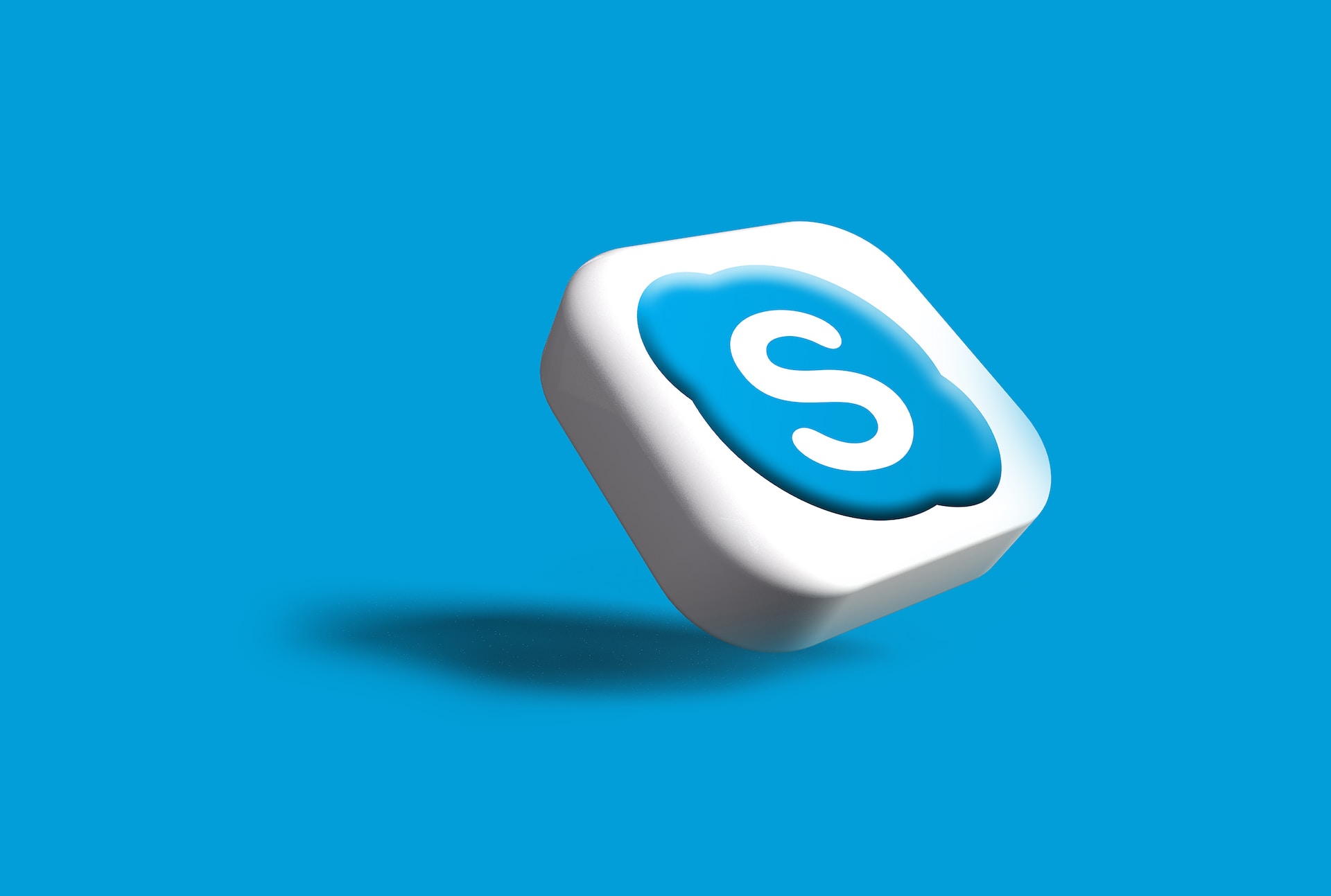Online community
Calling Woes: Skype Addresses ‘Your Connection is Too Weak’ Error with Promised Fix

Skype, the renowned communication platform that has connected millions of people worldwide, is addressing a long-standing issue that has frustrated users for quite some time—the “Your Connection is Too Weak” error. This error message, which pops up during calls and video conferences, has left users exasperated and longing for a solution. In this article, we will explore Skype’s response to this persistent problem, their promise to fix it, and the implications for users who rely on the platform for their communication needs.
The “Your Connection is Too Weak” Error:
Skype users have encountered the dreaded “Your Connection is Too Weak” error when attempting to make calls or participate in video conferences. This error suggests that the user’s internet connection is not strong enough to support a stable call, resulting in compromised audio and video quality. It has become a frustrating roadblock for users who have reliable internet connections and high-speed broadband.
The impact of this error is significant, especially for professionals who depend on Skype for business meetings, interviews, and remote collaboration. Disruptions, poor audio quality, and frozen screens disrupt productivity and hinder effective communication. The error has caused missed opportunities, strained relationships, and a loss of trust in the reliability of the platform.
Skype’s Response and Commitment:
In response to user complaints and the growing demand for a solution, Skype has acknowledged the “Your Connection is Too Weak” error and is committed to addressing it. The company recognizes the adverse effects this issue has on its users and aims to provide a more stable and reliable calling experience.
Skype’s team of engineers and developers has been diligently working to identify the root cause of the problem and develop an effective fix. They have identified several factors contributing to the issue, including network congestion, server load, and compatibility challenges with certain devices and operating systems.
The Complexity of Finding a Solution:
Resolving the “Your Connection is Too Weak” error is a complex undertaking due to the various factors involved. Network conditions, server infrastructure, and client software all play a role in the stability of Skype calls. The challenge lies in pinpointing the exact cause of the issue and implementing a comprehensive fix that addresses all contributing factors.
Skype’s development team has been conducting extensive testing and optimization to improve the platform’s ability to handle varying network conditions. This involves implementing advanced algorithms to prioritize data packets, optimizing server infrastructure, and fine-tuning client software to minimize the impact of network fluctuations.
Upcoming Fix and Rollout Plan:
Skype has assured its users that a fix for the “Your Connection is Too Weak” error is on the horizon. The upcoming solution is expected to roll out in the coming months, with a phased approach to ensure a smooth transition for all users.
To ensure the fix’s effectiveness, Skype is actively engaging with a selected group of beta testers who provide valuable feedback and help identify any potential issues before the wider release. This proactive approach demonstrates Skype’s commitment to delivering a reliable and seamless calling experience.
Looking Ahead:
The promised fix for the “Your Connection is Too Weak” error brings hope to Skype users who have long been grappling with this frustrating issue. As the fix is gradually implemented, users can anticipate improved call quality, reduced disruptions, and an overall enhanced calling experience.
Skype’s response to user feedback and their dedication to addressing this problem underscore their commitment to customer satisfaction. The company’s efforts to optimize network resilience and compatibility are vital steps toward ensuring seamless communication for all users.
Conclusion:
Skype’s acknowledgment of the “Your Connection is Too Weak” error and their commitment to resolving it have brought a sense of relief to users who have been grappling with call disruptions and compromised audio quality. The upcoming fix, coupled with Skype’s ongoing optimization efforts, promises to deliver a more stable and reliable calling experience.
As Skype works diligently to address this long-standing issue, it serves as a reminder of the importance of actively listening to user feedback and continuously improving digital communication platforms. By prioritizing user needs and investing in infrastructure and software enhancements, Skype aims to restore user confidence and reinforce its position as a leading communication platform in the digital age.
Lifestyle
Shearling Biker Jacket: Style Icon for Warmth and Comfort

Introduction
A shearling biker jacket is one of the most iconic winter essentials of all time. It combines the rugged personality of the classic biker jacket with the luxurious warmth of soft shearling, creating the perfect fusion of edge and comfort. Whether you’re dressing for the cold season, elevating your casual outfits, or aiming for a timeless, statement-making piece, the shearling biker jacket delivers style like no other.
This guide explores everything you need to know features, styling tips, benefits, care instructions, FAQs, and a final section dedicated to Gothic Jackets and Halloween Jackets.
What Is a Shearling Biker Jacket?
A shearling biker jacket is designed with a leather or suede exterior and a plush shearling lining made from wool. This unique structure gives the jacket its signature look tough on the outside, soft and insulated on the inside. The biker silhouette adds sharpness and attitude, creating a jacket that is both functional and incredibly stylish.
Why the Shearling Biker Jacket Is a Winter Essential
- Superior Warmth: Shearling is one of the warmest natural materials. Its wool fibers trap heat while still allowing breathability, keeping you warm without overheating.
- Rugged yet Refined Style: The biker cut, metal details, and leather finish give this jacket a bold and sophisticated appearance suitable for almost any setting.
- Exceptional Durability: Both leather and shearling are long-lasting materials. With proper care, a shearling biker jacket can last for many years and age beautifully.
- Extreme Comfort: The soft interior feels cozy and luxurious, making it a pleasure to wear even for long hours.
- Versatile Fashion Choice: It pairs effortlessly with casual, semi-formal, streetwear, and winter outfits—making it one of the most versatile jackets available.
A Brief History of the Shearling Biker Jacket
The roots of shearling jackets trace back to aviators who flew in freezing temperatures. Pilots depended on shearling for insulation at high altitudes. As time progressed, the biker subculture adopted the sturdy leather jacket design, giving birth to the modern biker silhouette. Eventually, designers fused the warm aviator shearling with the bold biker style—resulting in the timeless shearling biker jacket we know today.
Key Features of a Shearling Biker Jacket
- Shearling Lining: The wool interior provides unmatched warmth and comfort, making the jacket ideal for winter.
- Leather or Suede Exterior: The outer layer offers structure and protection from wind, giving the jacket its iconic toughness.
- Asymmetrical Zipper: A signature biker detail that adds attitude and makes layering easier.
- Wide Lapels:Often lined with shearling, these lapels add volume and dramatic flair.
- Sturdy Hardware: Belts, buckles, and metal zippers enhance the rugged appeal of the biker style.
Best Colors for a Shearling Biker Jacket
- Black: A classic choice sleek, modern, and always stylish. Ideal for bold, urban outfits.
- Brown: Warm and vintage-inspired. Perfect for rustic, relaxed, or earthy looks.
- Grey: Minimalistic and contemporary. Great for clean, polished outfits.
- Tan: A fashionable standout shade that brings softness and luxury to winter styling.
How to Style a Shearling Biker Jacket
Styling a shearling biker jacket is effortless because it pairs well with almost everything.
1. Classic Casual Look
- Blue or black denim
- A simple crew-neck shirt
- Boots or sneakers
This timeless combo keeps things clean and stylish.
2. Winter-Ready Outfit
- Turtleneck sweater
- Slim-fit trousers
- Leather boots
The shearling lining provides warmth, so you don’t need bulky layers.
3. Streetwear Vibes
- Hoodie or oversized sweatshirt
- Ripped jeans or cargo pants
- Chunky sneakers or combat boots
The jacket adds structure to relaxed streetwear pieces.
4. Smart Casual Appearance
- Button-down shirt
- Tailored pants
- Minimalist boots
A perfect balance between rugged and refined.
Why the Shearling Biker Jacket Never Goes Out of Style
Classic pieces stay relevant because they offer practicality and timeless appeal. The shearling biker jacket remains popular because:
- It elevates any outfit
- It performs exceptionally well in cold weather
- It blends luxury and toughness
- It adapts to changing fashion trends
Whether trends shift toward minimalism or bold statements, the shearling biker jacket remains a staple every winter.
Care & Maintenance Tips
Keeping your shearling biker jacket in excellent condition ensures it lasts for years.
- Avoid Heavy Moisture: Shearling can handle light rain, but heavy moisture should be avoided to preserve the wool and leather.
- Use a Wide Hanger: Maintains the jacket’s structure and prevents shoulder creasing.
- Condition the Leather: Apply leather conditioner once or twice a year to keep it soft and supple.
- Brush the Shearling Lining: A soft brush helps maintain the wool’s fluffiness.
- Store in a Cool, Dry Area: Avoid direct sunlight and humid environments.
Who Should Wear a Shearling Biker Jacket?
This jacket is ideal for anyone who wants:
- A stylish winter essential
- Confident, edgy fashion
- Warmth without bulky layering
- A durable jacket that lasts for years
- A versatile piece suited for multiple outfits
It works perfectly for men and women, young adults, and anyone with a bold sense of style.
Gothic Jacket: Dark, Bold & Expressive Fashion
A Gothic jacket is perfect for those who love dramatic, mysterious, and alternative fashion. These jackets often feature dark colors, intricate stitching, metal hardware, and unique silhouettes that create a powerful presence. Whether worn casually or for themed events, a Gothic jacket adds intensity and individuality to your style. It is the ideal choice for anyone who wants to break away from traditional looks and embrace a darker, more artistic aesthetic.
Halloween Jacket: Spooky, Fun & Full of Personality
A Halloween jacket brings creativity to life with bold designs, spooky themes, vibrant colors, or eerie patterns. Whether you’re dressing for a party, event, or simply enjoying the festive season, a Halloween jacket helps you stand out effortlessly. It blends comfort with unique artwork, making it both fun to wear and a memorable seasonal piece. Perfect for those who love playful fashion with a touch of mystery.
FAQs About Shearling Biker Jackets
Q1. Is a shearling biker jacket warm enough for very cold weather?
Yes! Shearling is naturally insulating, making the jacket suitable for harsh winter conditions.
Q2. Are shearling biker jackets heavy?
They are slightly heavier than regular leather jackets but still comfortable and easy to wear.
Q3. Can I wear a shearling biker jacket in the rain?
Light rain is fine, but avoid soaking it to protect the materials.
Q4. How long will a shearling biker jacket last?
With proper care, it can last many years and often becomes more stylish with age.
Q5. Is real shearling better than faux shearling?
Real shearling offers superior warmth, breathability, and durability. Faux shearling is lighter and animal-friendly but not as warm.
Q6. How should I clean a shearling biker jacket?
For deep cleaning, always use a professional shearling or leather cleaner.
News
Why Does Ghostwriting Shape the Voices We Never See?

Introduction
Most of the powerful memories, political speeches, and thoughtful columns are written by people who never had a chance to present their opinion across, so they write for other people to seize the opportunity, even when they don’t get the credit. This is what ghostwriting is all about; where someone else writes for you, making a powerful yet invisible presence. You might not know that, but some of the best authors have also used a ghostwriting service to complete their ideas in a coherent form.
Just like students take the best thesis editing service to refine and complete their projects, similarly, people from different spheres of life hire ghostwriters to voice their stories in a composed manner. This unseen work decides the career of leaders, celebrities, business icons, and even intellectual influencers. The question is not whether ghostwriting matters; it is how it continues to shape voices we never actually hear.
The Invisible Architects of Words
Ghostwriters are architects of words. They build narratives, organize complex ideas, and shape rough concepts into something that sounds believable to the accredited author or speaker. From politicians to CEOs, everyone takes professional ghostwriting services to capture their audience and persuade them towards their viewpoint.
Ghostwriting is not confined to one field; rather, there is ghostwriting for authors, filmmakers, or even politicians. Ghostwriters become a part of the background while copying another person’s voice and style of speaking. The real job of a ghostwriter is to capture the voice of the public figure without reflecting their voice.
Why People Hire Ghostwriters?
Did you know that 60% of nonfiction books that are produced by public figures involve the assistance of ghostwriters? Why is that so? Well! The reasons people hire ghostwriters are mentioned below:
- Time limitations: Busy professionals, politicians, and celebrities do not have the time to produce polished pieces of writing. Besides, most academic tasks nowadays involve dense research (bestassignmentwriter.uk, 2022) along with timely submission, which makes them go for external support.
- Writing ability: Even though people might be great at their area or field, but they might not be good writers for their experiences to come alive.
- Clarity and conciseness: Ghostwriters ensure the final product is appealing to the targeted readers.
- Marketability: A book or speech does not simply need to be accurate but also captivating enough to be interesting to readers or listeners.
Ghostwriting in Books and Publishing
The world of literature is filled with novels written by ghostwriters. Celebrities, sportsmen, and business leaders have autobiographies that are considered to be the best ones. A large number of them would not have been written if there were no ghostwriters.
A sports star might have an interesting story to share, but in a rough form, which is refined by the ghostwriter while adding depth and emotional factor. The book might sound boring without this support. This is not deception but collaboration, as the public star brings vision, the ghostwriter brings expression.
Publishing companies also like hiring ghostwriters because they understand deadlines will be met and a marketable product will be produced. It is such a delicate balance between creativity and practicality that keeps the business flowing smoothly.
Shaping Public Voices in Politics
Politics is the field in which ghostwriting has the most obvious but hidden part. Speeches that inspire millions of individuals were written with the help of professional writers. Even though not everything is ghostwritten, but the leaders don’t write every word themselves.
Political ghostwriting shapes national history. Whatever your leader says can become a part of history, shape opinions, and result in policy-making. In this case, the ghostwriter’s work is not just verbal; it is also political. They must understand public opinion, cultural references, and political figures.
Ghostwriting in Business and Academia
Outside of speeches and books, ghostwriting also impacts areas in which credibility and authority are most important. In business, papers and company reports are polished or even written as a whole by ghostwriters. Executives do sign them, but there are experts behind the scenes who ensure everything is professional, understandable, and consistent with the brand.
The subject is more controversial in educational institutes. Plagiarism and ghostwriting are undermining the integrity of university degrees to an extent not seen before (Singh & Remenyi, 2016). Some students hire ghostwriters to create their essays or dissertations. Ghostwriting in scholarship involves helping professors write articles, research summaries, or provide applications. In these cases, ghostwriters help place ideas in clearer language that is easily readable by more people.
The Ethical Debate
Ghostwriting is also an issue of honesty and integrity. So, if it is ghostwritten, is it the writing of the original author? Some argue that ghostwriting hides the true source of ideas and gives credit where credit is not deserving.
However, some people have the opinion that ghostwriting is not stealing but cooperation. The idea, insight, and opinion belong to the credited individual; the delivery comes from the ghostwriter.
How Ghostwriting Adds to The Story?
Ghostwriting not only refines but also actually influences the way stories are told. These are some ways it influences voices:
- Tone and readability: Ghostwriters rewrite dense or technical content to produce a conversational tone.
- Consistency: They maintain the style of a public figure consistent in books, speeches, and columns.
- Depth of feeling: Ghostwriters are able to bring out personal observations that are beyond the speaker’s notice or hard for the speaker to put into words.
- Cultural relevance: Professional ghostwriters include allusions, metaphors, and anecdotes that are familiar to today’s audiences. Even though they remain invisible, they still get to shape culture in positive ways by presenting new stories in an engaging manner through a public figure’s eyes.
Conclusion
Ghostwriting is a business that is flourishing despite being unseen. It influences the words we hear, but you are never going to find the ones who write them. Ghostwriters can be said as mind translators who put your ideas into words, then it be political speeches that reshape destiny to memoirs that reach millions. They deliver sense, emotional resonance, and cultural background, which are the main things that allow stories and ideas to cross boundaries. There are many controversies around it as well, as some consider it deception, while others call it collaboration. Their writing speaks for the ones who cannot write and keeps their wisdom from silence.
Online community
How to Learn Programming Languages from Social Media?

Introduction
The era of digitalization has tremendously changed the way we refer to knowledge and acquire skills. One of the biggest advantages of these social media platforms is a wide range of learning resources with immediate delivery and engagement. It has become a powerful resource for individuals interested in becoming developers who are able to learn languages at their own pace from social media.
Resources: YouTube, Twitter, Reddit, Instagram, and TikTok offer a treasure chest of where you can find tutorials, community support, and how-to guides from the best in the business. With the help of these resources, you can learn some basic skills of programming, which will be a great start and later pave the way for your career in various fields, such as web design solutions or even lead to your Burlington web design services business venture.
How Social Media Can Be Used as an Educational Tool
When it comes to quick learning, in my opinion, short informative videos are the cherry on top. One of the biggest pros to learn programming languages on social media is that you can consume small pieces of content that break up your day. This is perfect for bite-sized tutorials, where something like TikTok or Instagram can be used to make short 10-60 second videos covering a specific topic, such as basic programming concepts, all the way up to more advanced web development techniques. It will allow you to follow creators whose field of expertise is computer science, so you can learn lessons on complex subjects in small, bite-sized.
For example, if you want to learn how to provide web design services, you have 60-second videos on HTML, CSS, and JavaScript. You may want to check our these short video tutorials to begin learning how to code aged 5-12, making it a fun and engaging process of getting the fundamentals in coding covered.
International development community access
It brings learners from all over the world, connects them through social media platforms where you could join programming communities and gain knowledge and experiences. Twitter, Reddit or Facebook groups where developers can openly ask questions, share snippets and talk about problems they face as part of learning. If you enter these communities, you can talk with professionals who know what they are doing and ask about advice on the best ways to do responsive design or what is popping up every now and then in web design solutions.
Moreover, social media lets you connect with local developers and businesses that could offer insights to web design in Burlington. So, for instance, joining Burlington-based web design Facebook groups can teach you what local clients are looking for and how to adapt your work in a way that targets the locals markets.
Best social media sites to learn Programming
Traversy Media, YouTube: Practical and detailed video tutorials for in-depth understanding of Java Script programming.
When it comes to learning programming languages, there are so many tutorials available on YouTube with every framework you wanna learn. Long-form, in-depth tutorials on channels such as Traversy Media, The Net Ninja, and FreeCodeCamp that walk learners through the stages of coding in Python (and JavaScript, among others)
Moreover, YouTube channels also lie entire courses on various specialized concepts such front-end development, back-end development and web design solutions. By subscribing to these channels, you can develop a broad conceptual understanding of programming that will be invaluable for becoming adept at web design or even running your own Burlington web design firm.
1. Twitter Quick Tips & Industry News
Twitter is a great place to stay current on programming and web design trends. Quick Tips, Code Snippets & Industry Updates directly from developers. So following hashtags like #CodeNewbie or #100DaysOfCode can help you stay in touch with other learners and professionals.
Reply to Twitter thread by industry leaders that can help you in the frames of topics, like now a day technology trends on responsive web design etc. Its continuous feed of knowledge when combined with regular learning and research can allow you to get some profound insight in the world of web design interfaces that can be incorporated in your projects.
2. Reddit: Crowdsourced Learning Communities
There is a goldmine of information on Reddit for those looking to learn about programming and web development.
Reddits: r/learnprogramming, r/webdev and r/coding (to ask questions, show what you have done so far or where to learn)
For those of you who want to know about state-of-the-art Burlington web design and other regional practices related to web development, this will also use region-specific subreddits so that should be ideal for getting in touch with professionals.
Reddit: Reddit is a blend of community advice and long form tutorials, which suits both mastering programming languages or succeeding in web development.
3. Instagram and TikTok: Social media for learning visually through short tutorials.
Instagram and TikTok are really great places to learn new things, especially if you’re a visual learner like me! Several content creators post short, aesthetically pleasing coding tutorials which are also quite clear and easy to follow. You will find an array of tutorials from front-end developers to web solutions via hashtags like #CodeWithMe Or #ProgrammingTips, other trending types include; Mobile App Development and Web Design Solutions.
Each of these videos are bite-sized and if you follow them consistently, you will eventually develop a good coding foundation without making the learning experience boring. It reinforces the abstract programming ideas and adheres to visual learning.
Maximizing Learning on Social Media
1. Consistency is Key
Consistency is the most important thing while learning programming languages from social media. Establish a set schedule to learn and follow creators who upload regularly so you can keep advancing in your skills consistently. If not all already 2nd, consider to make a profile give attention only to your Insight account learnings follow #ProgrammingExperts in ##Tutorials & browse for many YouTube channels of value led content.
Doing this, with proper learning objectives and progress tracking, can be a useful tool for you to systematically gain more knowledge that you can then pitch as web design solutions or incorporate into your Burlington web design projects.
2. Practice What You Learn
You can learn a lot on social media theoretically but the most important to way of learning programming is, practice. And follow along with tutorials and code it out yourself. Work on small projects on the way, landing few smaller webpages to a complex responsive design. Your programming language depth grows the more you practice.
It will enable you to take your skills and apply them in real-world scenarios, such as developing web design solutions for small businesses or provide a market for web development services in Burlington.
3. Participate in Challenges and Take Online Courses
Several social media platforms boast coding challenges like #100DaysOfCode, or tutorials offered by the creators. They are a great way to keep yourself engage, connect with other learners and build real world coding experience.
If you are serious about learning programming languages from social media, using this content right alongside courses on platforms like Coursera, Udemy and Code academy will give you a concrete learning experience in harmony with the social media.
Conclusion
Teaching programming languages off of social media is a modern, elastic manner by which even the most basic coding talents can be cultivated. Social media platforms are filled with resources whether you want to learn more about web design, app development or perhaps start your own Burlington web design business.
It has a plethora of information online ranging from youtube tutorials to the latest trends on twitter that can potentially turn you into a solid developer, who’d be willing to face the struggles existing in our IT world. Using social media to help make that breakthrough and create just the tempo you need to starting a successful career in programming means practicing on a regular basis, interacting with communities and really playing smart based on what you learn.
-
Business2 years ago
Cybersecurity Consulting Company SequelNet Provides Critical IT Support Services to Medical Billing Firm, Medical Optimum
-
Business2 years ago
Team Communication Software Transforms Operations at Finance Innovate
-
Business3 years ago
Project Management Tool Transforms Long Island Business
-
Business2 years ago
How Alleviate Poverty Utilized IPPBX’s All-in-One Solution to Transform Lives in New York City
-
health3 years ago
Breast Cancer: The Imperative Role of Mammograms in Screening and Early Detection
-
Sports3 years ago
Unstoppable Collaboration: D.C.’s Citi Open and Silicon Valley Classic Unite to Propel Women’s Tennis to New Heights
-
Art /Entertainment3 years ago
Embracing Renewal: Sizdabedar Celebrations Unite Iranians in New York’s Eisenhower Park
-
Finance3 years ago
The Benefits of Starting a Side Hustle for Financial Freedom































